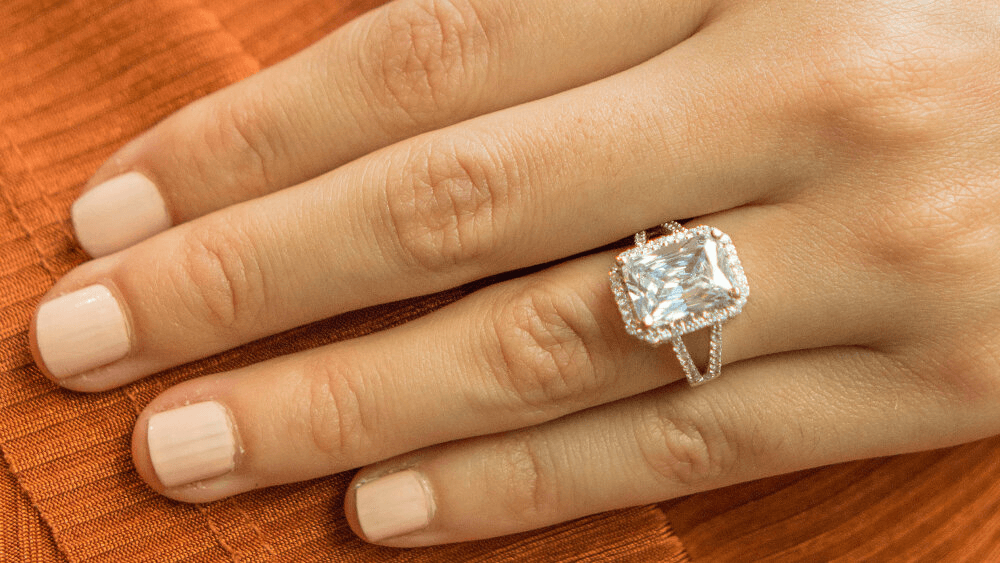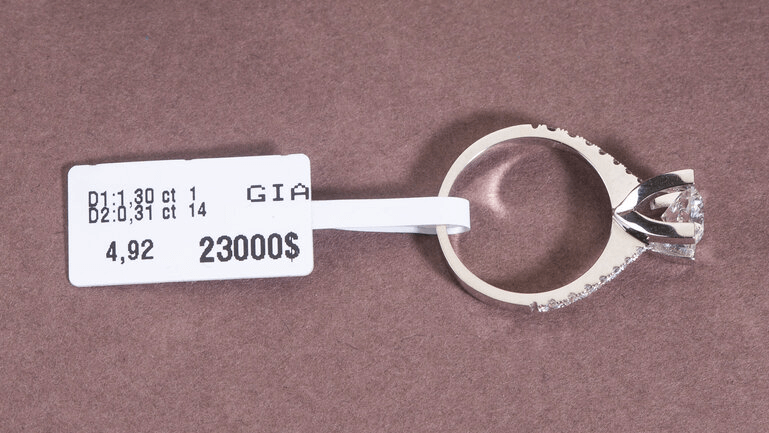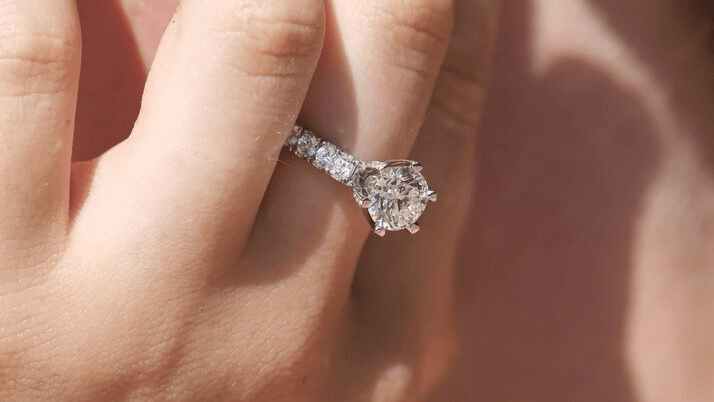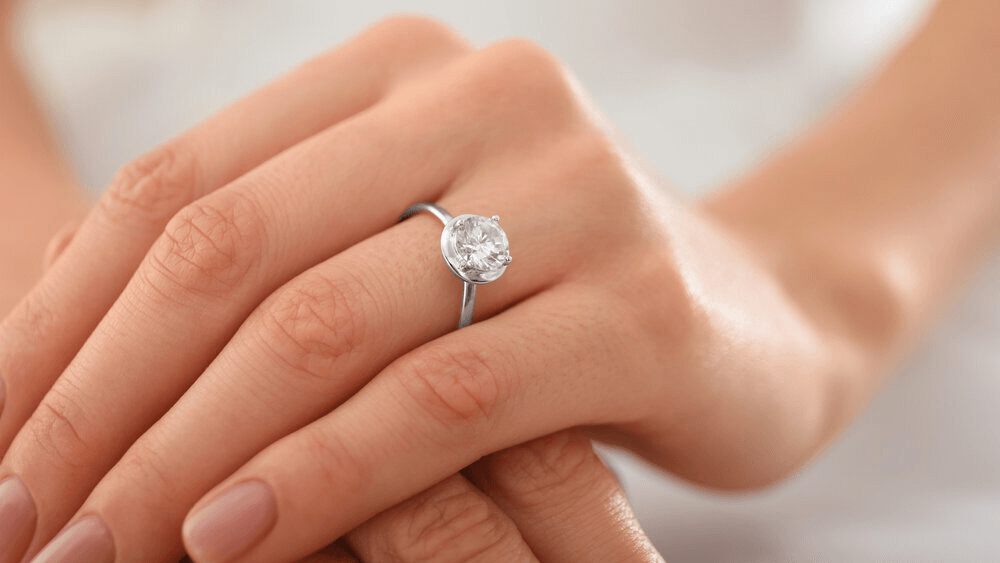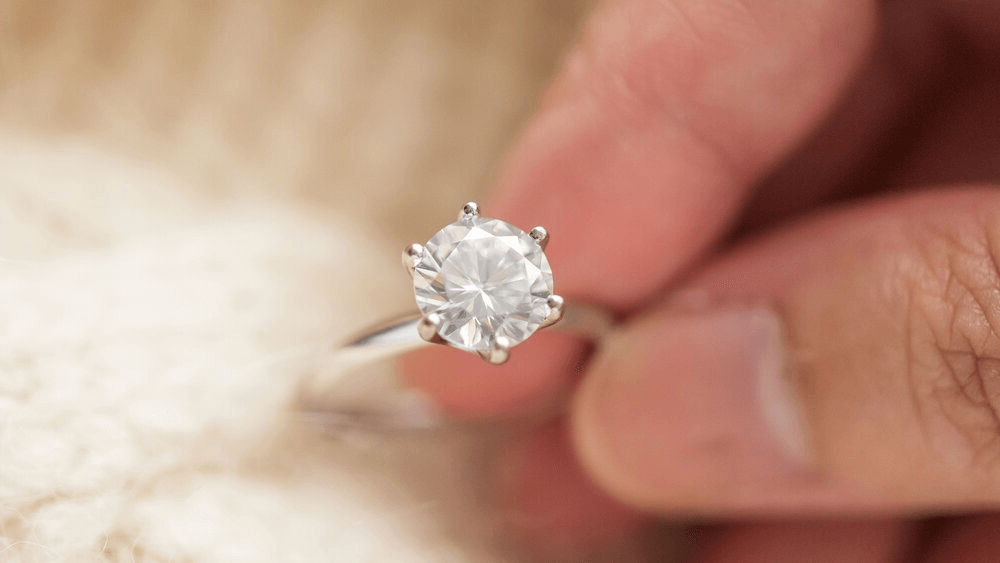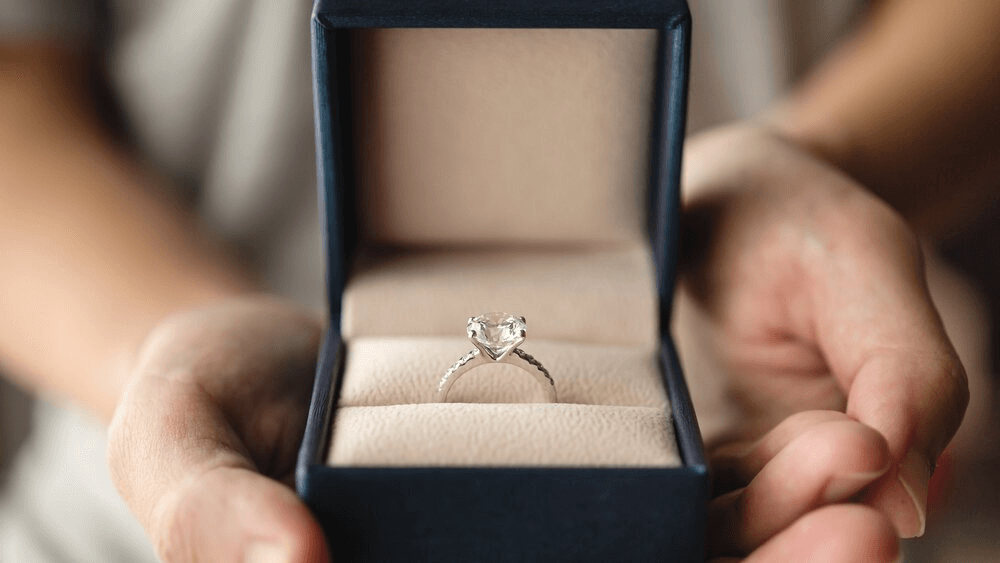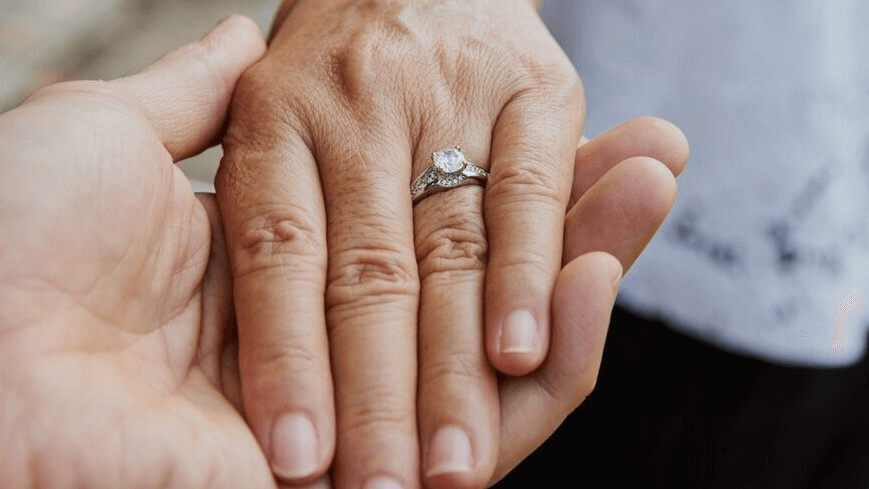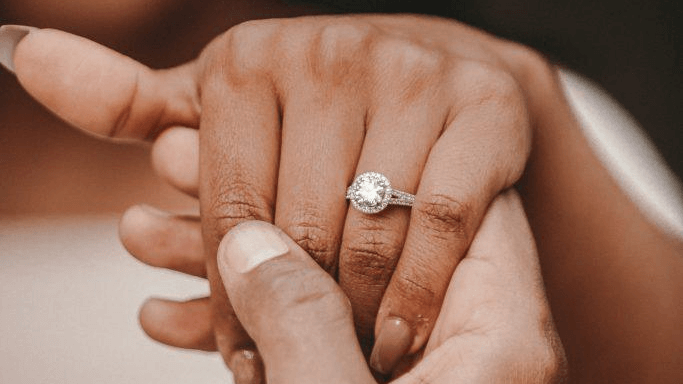How Much Should You Really Budget and Spend for an Engagement Ring?

By Gary A.

Edited by Olivia H.
Published May 17, 2024
Edited on Feb 25, 2025
When it comes to selecting the perfect ring, engagement rings by budget offer the flexibility to find a stunning piece that matches both your style and financial comfort.
🎧 Listen to our expert insights:
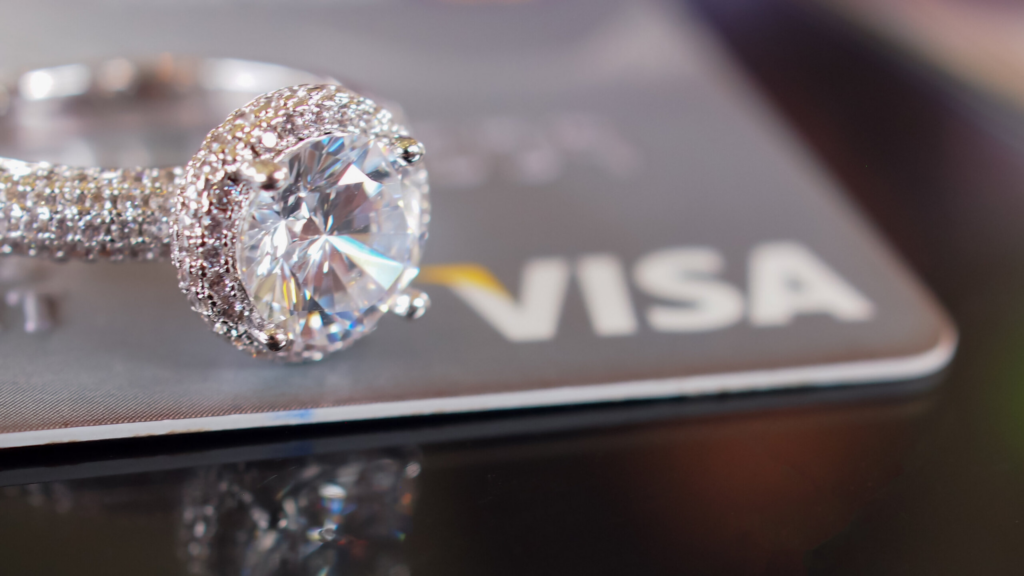
Navigate this Guide:
- 6 Quick Tips and Considerations for understanding How Much to Spend on an Engagement Ring:
- Introduction to Engagement Rings by Budget
- Decoding Engagement Ring Myths
- Setting Your Engagement Ring Budget
- Shopping Smart: Finding the Perfect Ring
- Our Expert Take
- 8 Frequently Asked Questions
Before we dive deeper into the specifics, here are some practical tips to help guide your decision-making process:
6 Quick Tips and Considerations for understanding How Much to Spend on an Engagement Ring:
When deciding how much to spend on a diamond engagement ring, it’s crucial to approach the purchase with a balance of practicality, personal sentiment, and financial awareness. Here are key tips to guide you through this significant decision:
- Tip 1: Understand Your Financial Limits
Assess Your Financial Situation: Before setting a budget for an engagement ring, review your current financial status. This includes analyzing your savings, monthly income, and any existing debts or financial commitments. The key is to determine a comfortable spending amount without overextending yourself financially. - Tip 2: Align with Partner’s Expectations
Communicate with Your Partner: Discuss with your partner their expectations and preferences for the engagement ring. While maintaining the element of surprise, try to gauge their style preferences and what they consider a reasonable amount to spend. This will help align the purchase with both your financial reality and their desires. - Tip 3: Research and Compare Prices
Do Thorough Market Research: Investigate the average costs of diamond engagement rings within your preferred style and quality range. Compare prices across various jewelers, both online and offline, to understand the market and find the best value for your budget. - Tip 4: Prioritize Key Features Over Size
Focus on Quality Over Carat Size: Often, a smaller diamond of higher quality can be more impressive than a larger stone of poor quality. Pay attention to the 4Cs (Cut, Color, Clarity, and Carat) and prioritize the features that matter most, like a well-cut diamond that offers brilliance and sparkle. - Tip 5: Be Cautious of Sales and Discounts
Beware of Deals Too Good to Be True: While sales and discounts can lead to savings, it’s essential to ensure you’re not compromising on the quality. Be cautious of deals that seem significantly lower than average market prices, as they may indicate lower quality or other issues. - Tip 6: Plan for Long-Term Value
Think Long-Term: An engagement ring is a long-term investment. Consider its future value, both in monetary terms and sentimental worth. Opting for a classic and timeless design can ensure the ring remains stylish and significant for years to come.
Now that you’ve got these practical tips, use Jeweler AI below to find the perfect engagement ring that suits your style and budget:
Introduction to Engagement Rings by Budget
An engagement ring is there to symbolize how deep your love for your partner is, but, a lot of the time, it can start to feel as though an engagement ring’s main purpose is to represent how deep your pockets are. Of course, this isn’t the case, but shopping for an engagement ring forces you to ask yourself a pretty difficult question: How much should I spend on an engagement ring?
It’s the most basic, obvious question of all – well, aside from a simple, ‘Will you marry me?’ But it’s also one of the hardest questions to answer without second-guessing yourself, backtracking, withering and dithering and generally delaying the answer for as long as possible.
But, really, how are you going to get anywhere close to an actual proposal if you don’t answer this question?
Decoding Engagement Ring Myths
There’s a lot of bad advice masquerading as good advice – or, worse still, rules – about how much to spend on an engagement ring. Make sure you don’t fall for them…
The Outdated Salary Rule
Once upon a time, there was a ‘rule’ introduced to the general public dictating that a fiancé-to-be should spend a certain number of months’ salary on a diamond engagement ring for their future wife.
This was a marketing campaign put out in the 1930s – yep, almost 100 years ago. Back then, the rule stood at one months’ salary, which doesn’t sound too bad. A few months’ careful scrimping, and you’d be there.
But then things changed. By the 1980s – the decade of excess and that spend, spend, spend mentality – the ‘rule’ had jumped from 1 month to 3. Even with inflation, a jump of 200% is…well…it’s pretty high.
Right now, the average US salary is around $6,200, which would mean that the average person buying an engagement ring would be spending just under $20,000.
While there are plenty of diamond rings on the market for a budget of $20,000, that’s a lot higher than the average spend, which tends to cap off around $6,000 or $7,000.
In short, don’t be swayed by a so-called ‘rule’ that was devised as a clever marketing campaign way back when.
The ‘Bigger is Always Better’ Rule
We can’t escape the fact that big diamonds impress almost anyone who sees them, but we can get real about the fact that bigger diamonds do not equal bigger love. Again, this likely stems from clever marketing, but diamonds that don’t reach some sort of mythical carat weight make plenty of incredible, dazzling engagement rings.
A diamond within your budget is far more impressive than a budget stretched beyond its comfort zone.
Setting Your Engagement Ring Budget
We almost invariably recommend that you split your budget (roughly) 80/20. This is a good rule of thumb whether your budget is particularly tight or on the larger side, and it’s much more convenient than a specific number dictating how much to spend on an engagement ring. Then again, a particularly large budget – say, $20,000+ can probably afford to be a little more generous toward the diamond.
The ring setting is the less expensive part, but you don’t want to skimp on it. A budget of $1,000-$3,000 will generally get what you want, unless you have particularly big dreams for a complex design filled with accent stones and precious metals.
Assessing Your Financial Landscape
Our best advice here? Be realistic with yourself. There’s nothing to be gained from overspending on the engagement ring – it’ll only deprive you and your partner of a few extra digits in that wedding budget.
Consider your goals for the proposal – do you have a specific timeframe or event in mind, or do you have time to keep saving for another few months while you browse? There’s no right or wrong answer, and we can help with every step in the decision making process, but only you can decide how much you can (or want) to pay.

Balancing Expectations and Reality
Most first-time diamond buyers are preoccupied by carat weight, so a good way to set your expectations early on is to learn more about how carat weight relates to overall diamond size.
We have a full guide available here, if you want to brush-up on that all-important fourth C.
Natural vs. Lab-Grown Diamonds
Lab grown diamonds are generally the less expensive option, namely because they’re not the rare, finite resource that natural diamonds are. There are plenty of perks to investing in a lab grown diamond, although buyers should keep in mind that a lot of people still really value the sentimental value behind earth-made diamonds. These have been used as symbols of love and commitment for thousands of years of human history, and lab grown diamonds – despite being very impressive and beautiful alternatives – don’t always live up to that same hype.
Ultimately, it all comes down to the individual. If you’re not too bothered one way or the other, then a lab grown diamond can be a good way to get more for your money; if you value the cultural significance of ancient, earth-made diamonds, then it’s not worth the sacrifice just for a slightly larger stone.
Shopping Smart: Finding the Perfect Ring
Finding a beautiful diamond within your budget is always possible, and, at WillYou, we know that better than anyone. All it takes is a little savvy and insight, and you can master the art of browsing for diamonds.
Here are key things to know – we have in-depth guides on all these subjects:
Understanding The Four Cs
Namely, knowing where to invest more, and where to save money. Color and clarity are great areas of diamond quality to save money on; a few grades lower on the scales, and you can save hundreds – or even thousands – of dollars. Cut is not the place to save money, however. If you can balance Clarity and Color without scrimping on Cut, you’ll walk away with a beautiful diamond.
Saving on Metal
Platinum is a popular choice for an engagement ring, but white gold is significantly cheaper while being very similar in terms of appearance and shine. It’s a little heavier on the upkeep, but hardly a deal-breaker. Also, if yellow or rose gold is your style, consider a lower karat. Don’t dip below 12 karats if you’re worried about losing color, but remember that there’s a big difference in ticket price between 22K or 18K gold, and 12K or 14K.
Avoiding Brand names
The high-end, luxury brands of the world have a lot going for them, and most of us are familiar with the appeal they pose – particularly when it comes to jewelry. Just keep in mind that a massive portion of the price of one of their engagement rings will be there because of the branding attached to them. In other words, you’re paying thousands of dollars for a distinctive box that’s going to live in a sock drawer for the rest of its life.
Online vs. In-Store Shopping
We’ve said it before, and we’ll say it again and again (and again): online is the more economical option for so many reasons. Online, we don’t have to worry about all the costs of keeping a brick-and-mortar store running, and we can handle bigger demands in terms of footfall.
This means we can be more competitive with our prices. Our GIA certified diamonds are all hand-picked for visual quality and value for money, but our prices are free from the big mark-ups luxury brands or smaller businesses need to charge.
Our JewelerAI is always on-hand to ensure that you are directed towards diamonds that fit your budget, but don’t sacrifice on beauty, sparkle, or clarity.
Customization and Its Impact
Customizing a ring inevitably means that it’s going to cost a little extra, but many customizations are minor and can fall within your existing ring budget of 20%. Accent diamonds (also known as melee diamonds) and engraving are two of the most popular options for ring customizations, and both will probably fall within the $50 – $200 range.
Designing a ring from scratch will be a lot more expensive, since the jeweler will need to draw up designs and invest a lot more time into the ring’s creation. It’s a great way to go if you have the room in your budget, though – and a unique idea for the ring.
Potential for Upgrades
Diamond upgrades are a popular option for buyers to keep in their back pockets. What you can afford in your twenties or thirties may only be a fraction of what you can afford in your forties or fifties, but the option is always there to trade-in the original diamond and have a new, bigger diamond set in its place.
It’s not always the simplest subject, and can be a little controversial for the more sentimental among us. But, if you’re feeling worried about the size of your diamond, remind yourself it doesn’t have to be the ‘forever stone’.
Our Expert Take
Big diamonds, small diamonds – six-figure rings, or 4-figure rings – whatever you invest into, let it be beautiful and filled with your love and commitment to your partner. When the confetti has settled and the champagne is all poured out, no one is going to be asking about the price tag – and, if they do, simply tap your nose and keep going on with your day.
This is your proposal and your commitment, so let it fit your budget – not any outdated ‘rule’ or myth.
8 Frequently Asked Questions:
- How much should I realistically spend on an engagement ring?
- The amount to spend on an engagement ring is highly personal and should align with your financial situation. There’s no fixed rule, but the average cost in the U.S. as of 2021 was about $5,225. Evaluate your finances and discuss with your partner to determine a budget that works for both of you.
- Is the “three months’ salary” rule for buying an engagement ring still relevant?
- No, the “three months’ salary” rule is outdated and was part of a marketing strategy by diamond companies. What’s important is to spend what feels right for your financial situation and personal values.
- How can I save money on an engagement ring without compromising quality?
- Consider alternative gemstones, opt for a slightly lower grade of the 4Cs where differences aren’t visibly noticeable, choose a less expensive metal, or buy from online retailers where prices can be more competitive.
- Should the cost of an engagement ring include the wedding band?
- Typically, the cost of an engagement ring is separate from the wedding band. However, some couples choose to budget for both together, especially if they’re considering a matched set.
- How can I ensure I’m getting a good deal on an engagement ring?
- Research and compare prices across different jewelers, look for certifications for diamonds (like GIA or AGS), and consider buying during sales or off-peak times. Online reviews and recommendations can also guide you to reputable sellers.
- Can I finance an engagement ring purchase?
- Yes, many jewelers offer financing options, but it’s crucial to read the terms carefully. Interest rates can be high, and it’s essential to ensure the monthly payments fit within your budget to avoid financial strain.
- Is it better to buy an engagement ring online or in-store?
- Both have their advantages. Online shopping offers a wider selection and potentially lower prices, but seeing and trying on rings in-store can help you better understand preferences and sizes. Consider a hybrid approach: research online and visit stores to make an informed decision.
- How important are the 4Cs in choosing an engagement ring?
- The 4Cs (Cut, Color, Clarity, and Carat) are crucial as they determine a diamond’s quality and value. However, balancing these based on what’s most important to you and your partner can help you choose the best ring within your budget. Often, cut and carat take precedence for their impact on a diamond’s appearance.
Discover the perfect engagement ring within your budget with Jeweler AI expert guidance – start now!
FOLLOW-UP GUIDE SERIES

